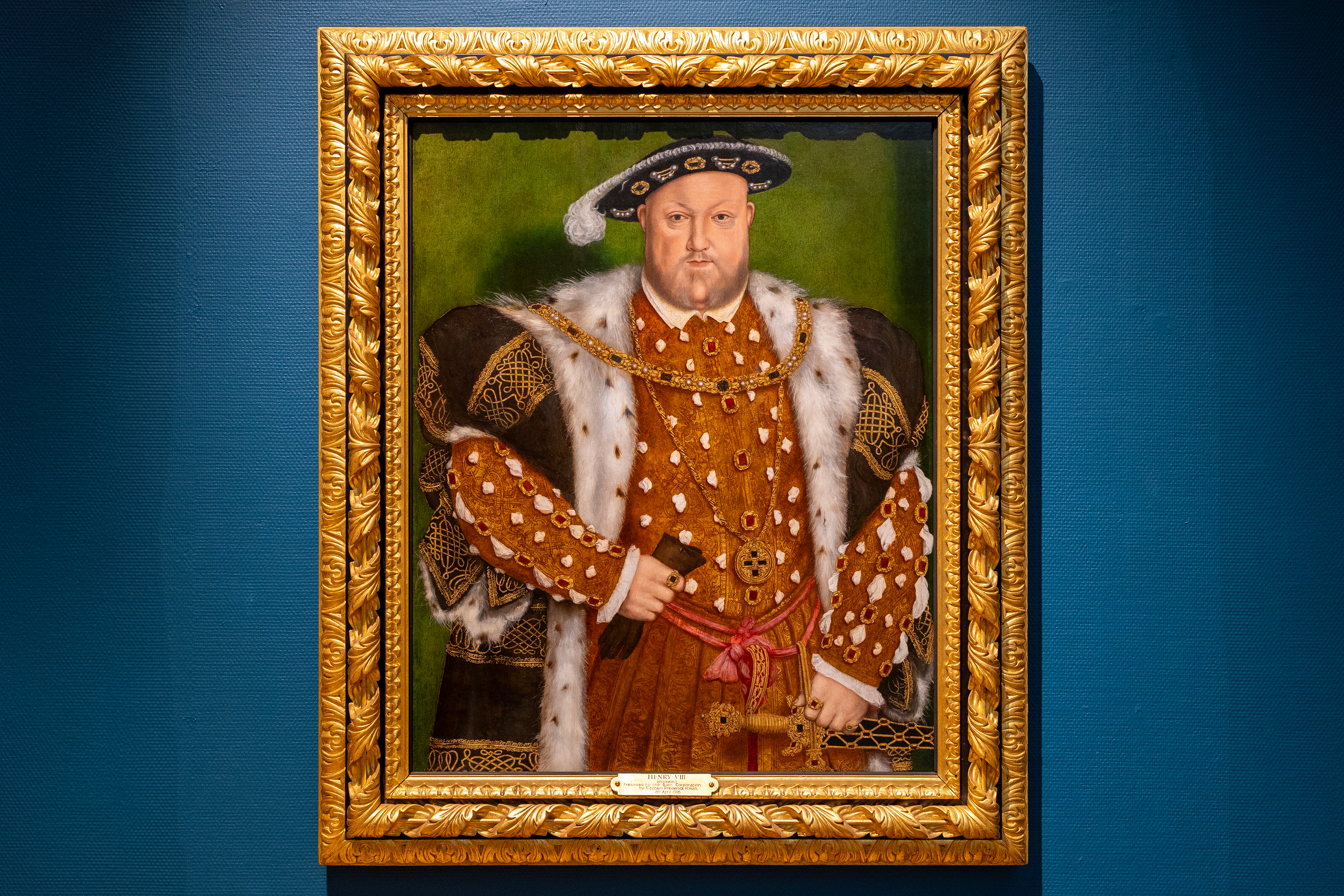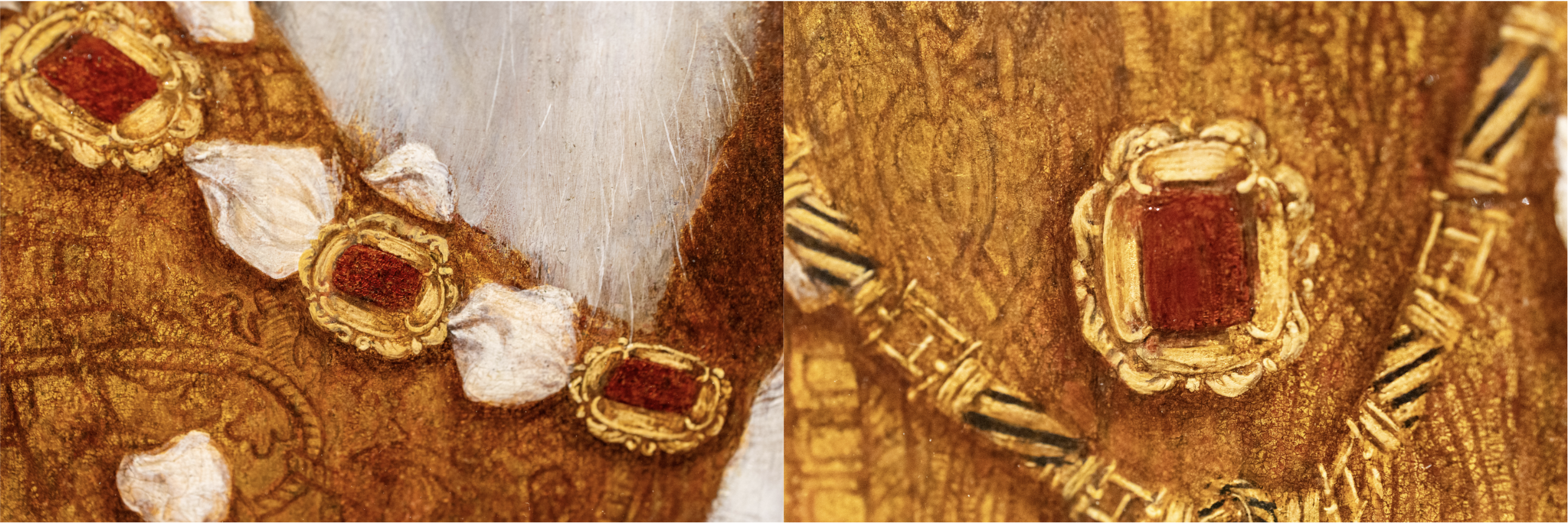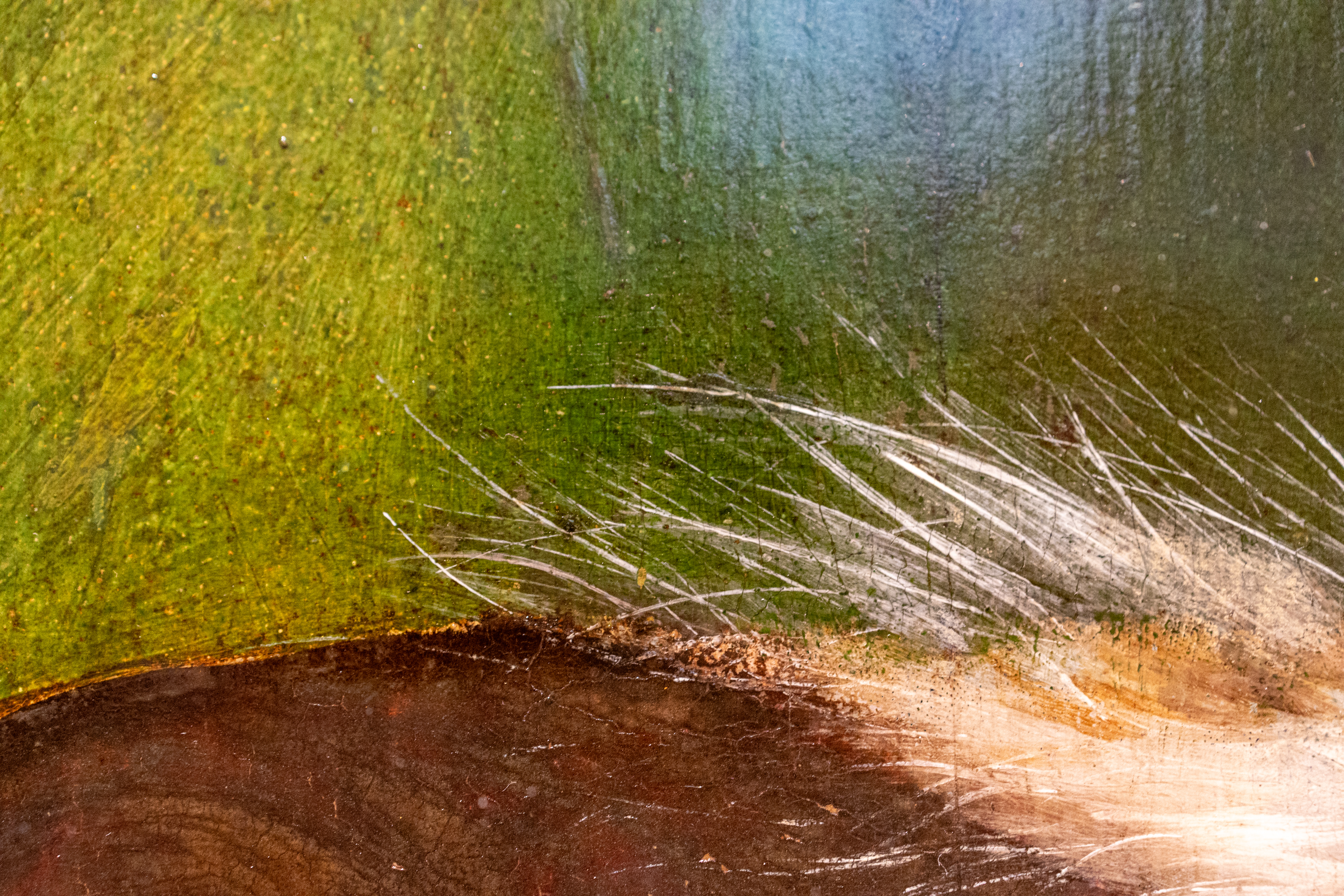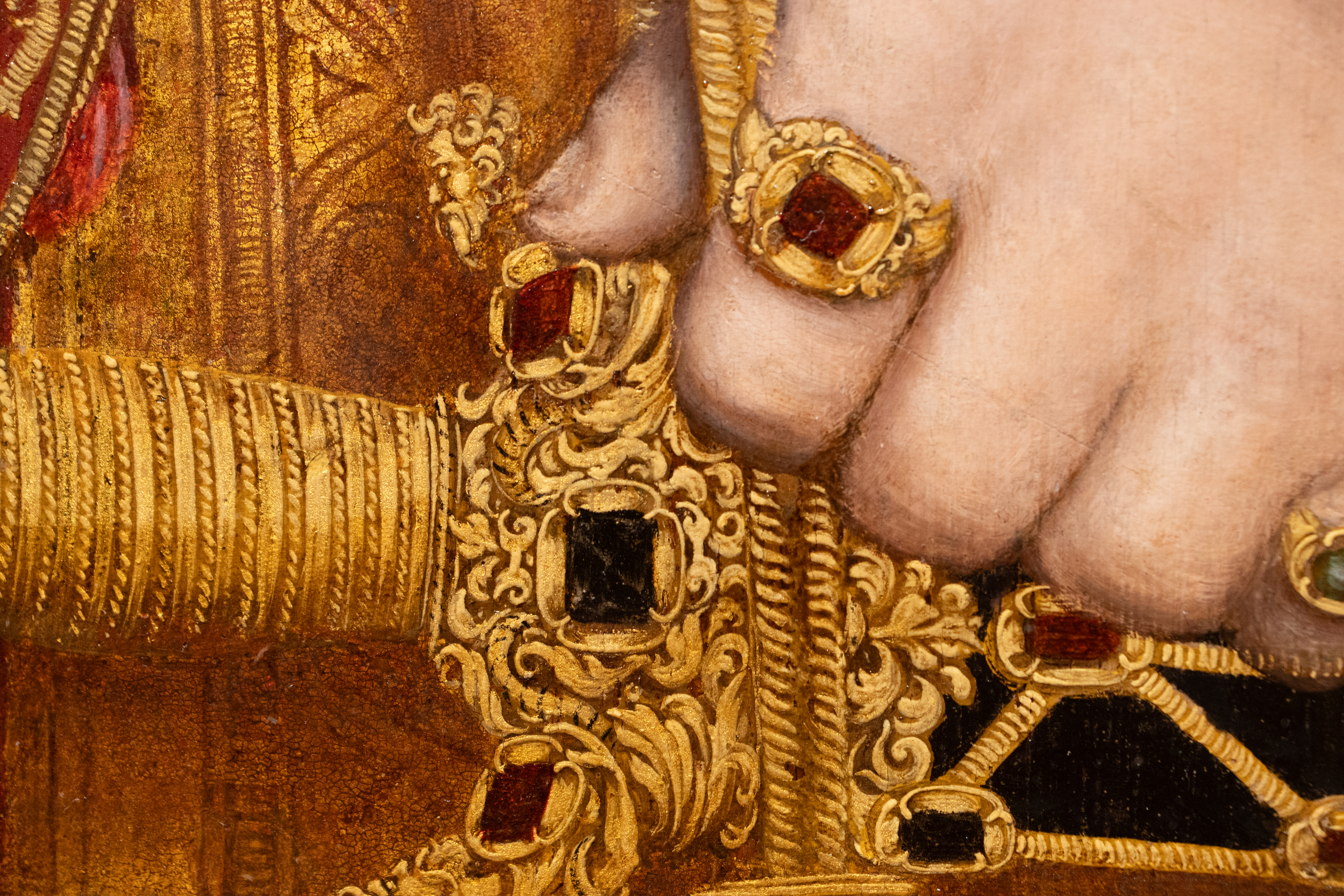
Our portrait of Henry VIII after Holbein is one of the most precious and admired paintings in the Victoria Art Gallery collection. It is loved by staff, volunteers and visitors not just because of the fame of the sitter, but also for its high quality and historical significance.
Dendrochronological analysis of the panel it is painted on and associated historical research dates this work to the 1540s. Holbein’s lost original was painted in Henry VIII’s private chambers in 1537. Subsequently copies were made, commissioned by courtiers keen to demonstrate their allegiance to this most mercurial monarch, whilst other copies were used as diplomatic gifts. Given the age of our work, it comes into this category – one of a small number of ‘authorised’ copies, created during Henry VIII’s lifetime and painted with his approval, by an artist of his choice.

(Above: A photograph of the painting at an earlier point in the conservation treatment.)
Conservation was funded through a grant from the Woodmansterne Art Conservation Awards 2023/2024 and support from the Friends of the Victoria Art Gallery. Discoloured Victorian overpaint has been removed, old damages have been dealt with and discolouration corrected. Repairing the magnificent gilding on Henry VIII’s doublet took many weeks of delicate and painstaking work by conservators.
The detailed analysis by our expert conservators has revealed some of the secrets of the artwork. Clues to the nationality of the artist can be found in the gilding on the sleeves. In this period, German artists favoured lead tin yellow pigment to paint gold, whereas English artists stuck to the established method of applying gold leaf to a mordant – the gold leaf used suggests a strong possibility that an English artist is behind this picture.
Henry’s golden doublet had been extensively overpainted, probably in the Victorian period or the early 20th century. Whilst it follows the original design, it is somewhat crudely done, yellow paint was used rather than gold leaf and powdered copper added, which has since oxidised and turned green. As the “green gold” with its grainy texture is difficult to remove with solvents without damaging the delicate gilt layers below, the conservators removed these layers by hand - a painstaking and time-consuming process. Through examination under a microscope, the conservators found the original doublet featured a layer of silver leaf, followed by a red glaze, followed by gold leaf. This unexpected discovery may indicate a change of mind on the colour midway through painting the portrait.
(Below: Two images showing close up views of Henry VIII's Doublet and the gold leaf overlay)

Microscope analysis of the velvet sleeves has also revealed several layers of glazes were used to create a rich, deep black colour. A pigment called smalt (made of powdered cobalt glass) was used to add a blue tinge, but it has oxidised and the colour has faded away completely to leave the sleeves as a dark brown hue.
The background had been painted over with a grey paint, probably to mask some knocks to the paint surface. Now the overpaint is gone, the original green background is much richer. The face also has considerable overpaint. The original paint is very thin and the under-drawing is very obvious around the beard and eyes. The fragility of the original surface and the more cohesive appearance of the overpaint here means there was a hesitance to remove these areas and to just restore the damage instead.
(Below: Close up image of the Green Background post conservation)

Other areas of the painting have survived remarkably well; the gold necklace, pearls and jewels have taken on a new lease of life with the old varnish removed and really shine with the new varnish applied. Light areas, painted with lead white, have generally fared better than the more friable darker areas. The hands, for example, are in good nick, yet the gloves have thinned and are partly see-through.
(Below: A close up of Henry VIII's Hand resting upon his sword)

Our portrait of Henry VIII is looking better than it has done for decades and it is back in pride of place in our free-to-enter Upper Gallery.






